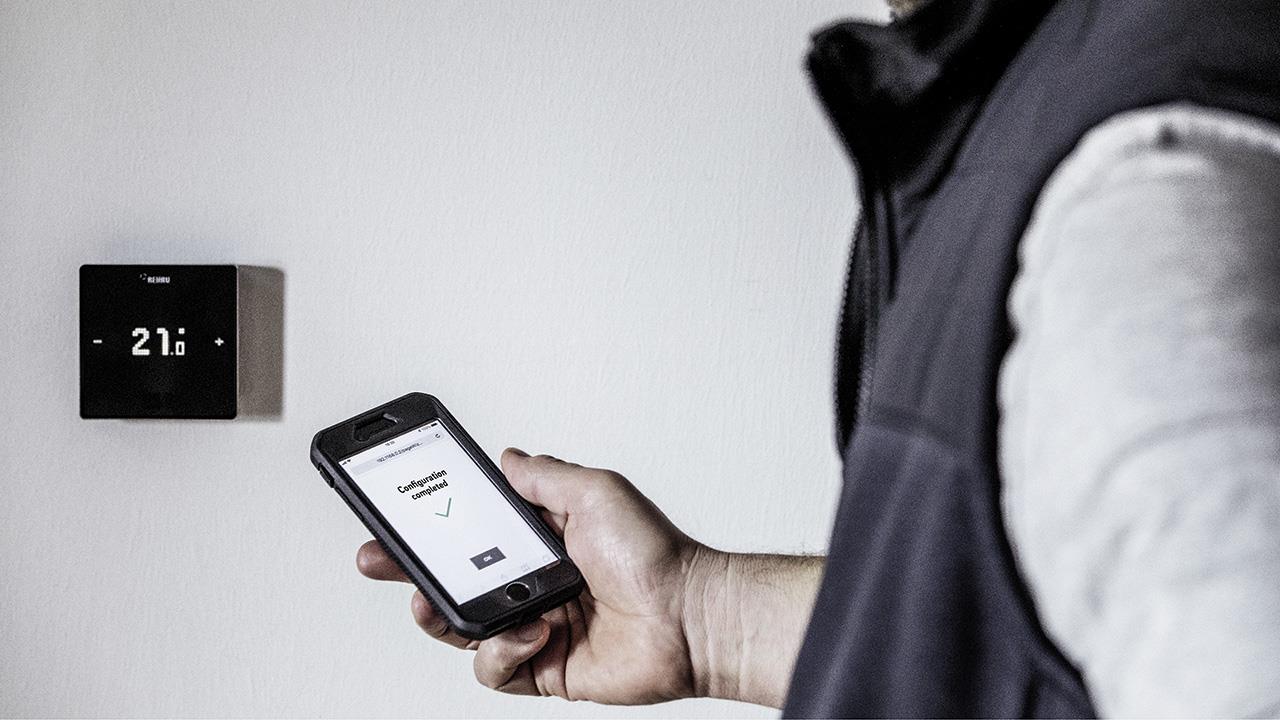

Franz Huelle, Head of Technical at REHAU Building Solutions, explores some of the latest smart control trends within the heating industry.
Whether in newbuilds or existing properties, residential heating systems have continued to evolve to meet ever-changing occupant demands. Developers and contractors are responsible for specifying and installing heating systems that provide excellent performance for the end-user, while also delivering efficiencies and long-term energy bill savings.
Additionally, these stakeholders are faced with the added pressure of keeping building costs low and specification high. Smart controls could offer a solution to this dilemma.
The rise of smart controls
Over the past few years, smart home technology has grown exponentially in popularity and use in homes across the world. The continued development of 5G systems into our national infrastructure along with this growth shows the UK’s own smart home market, worth over £900 million in 2017, is set for massive expansion.
As a result, consumers will expect to see this innovative technology being implemented across the country, helping them save energy, and providing greater convenience and comfort. Contractors and developers should therefore consider smart controls as part of efficient heating systems within residential projects they are working on.
Though smart controls can optimise a multitude of home functions, they should work in conjunction with an efficient space heating solution in order to reach their full potential. Indeed, underfloor heating (UFH) is fast becoming a more cost-effective and desirable means of heating any space when used with smart controls.
Domestic needs met
Where we live and who we live with is constantly changing. With cohabitation and multigenerational family living rising with the cost of rent across the nation, the requirements for space heating within each residence are now more differing than ever. Whether it is a renovation project within an existing property or a residential newbuild development, contractors must select a heating solution that can keep up with demands of every occupant.
The flexibility of smart controls can help to alleviate the complications associated with these varying heating requirements. Couple this with an efficient means of space heating, such as UFH, and every room can be heated to the exact requirements of each occupant.
Furthermore, the solution can also reduce overall energy consumption by optimising the system based on the building’s heating requirements and habits of occupants. By reducing energy consumption and optimising the space heating, the end-user’s energy bills can be reduced in turn.
Now more than ever, the nation’s homes have requirements outside of the usual morning and evening cycles. Domestic space heat must also take into account the growing trend of remote working and home office spaces. With more professionals requiring only a laptop, phone, and connection to the internet to carry out their work, remote and flexible working has become more and more prevalent as our schedules and lives change. Therefore, heating systems need the flexibility to heat individual parts of the house, like a home office, at different times to the rest of the rooms.
Get connected
Connected smart devices can use data from sensors, the internet, and information learned over time from a building’s efficiency and occupant habits to optimise the heating of a space. With other technologies like geofencing, which determines the location of a building’s occupants and heats their rooms accordingly, smart solutions can continually optimise a home’s space heating.
Installing smart technology can seem a daunting and complicated prospect. However, most systems deliver on ease of installation and are designed with flexibility and adaptability in mind, so installers can effectively implement smart controls into any home.
The internet connectivity of these smart devices also provides contractors with a host of other possibilities, including remote access to installed systems for servicing. With end-user permission, system data can also be accessed through dedicated apps, delivering more intuitive maintenance, saving time, and increasing customer satisfaction.
The benefits of smart technology do not end with heating systems either. Systems such as REHAU’S NEA Smart 2.0 will soon bring flexibility to other temperature control systems, regulating and optimising the way a building’s heating and cooling requirements for better performance and cost efficiency.
If you'd like to keep up-to-date with the latest developments in the heating and plumbing industry, why not subscribe to our weekly newsletters? Just click the button below and you can ensure all the latest industry news and new product information lands in your inbox every week.